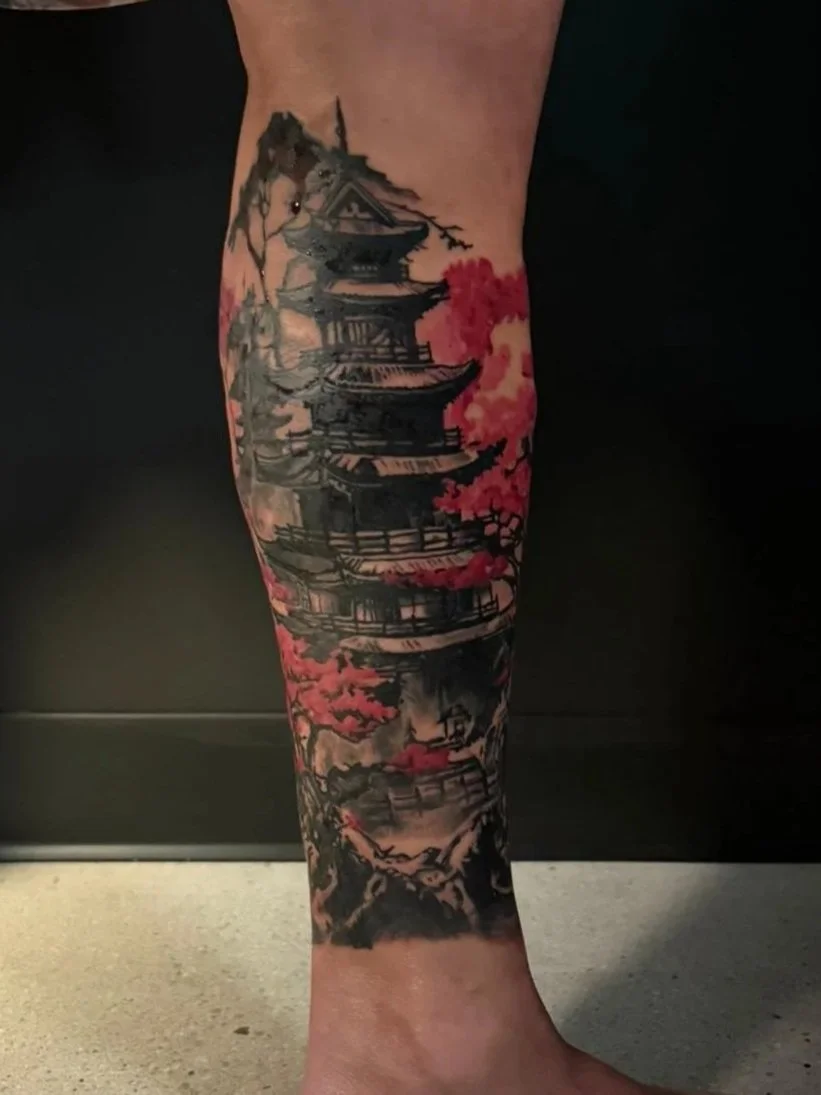All The Truths Behind Black & Grey Realism Tattoos
When people search for “black tattoos” or “black and white tattoos,” what they’re often looking for is a style known as black and grey realism. It’s one of the most recognizable tattoo styles in the world, yet it’s also one of the most misunderstood. The truth is, not all black and grey tattoos are the same. Within this category are many variations. Some rooted in tradition, some experimental, and others blending multiple techniques into something entirely new.
Black and grey realism isn’t just about creating an image with shades of black ink. It’s about using depth, contrast, and subtle tones to bring subjects, whether portraits, animals, religious imagery, or surreal scenes, to life on the skin. And while the term “black and grey” sounds simple, the reality is that there are many ways artists approach it, each creating a different final look.
True Black and White Tattoos
At the most basic level, there are tattoos done using only black and white inks. This version relies heavily on stark contrast: pure black for shadows, pure white for highlights, and skin tone as the midtone. The result can feel graphic and bold, with less subtle blending. These tattoos often resemble high-contrast photography or black-and-white film.
This style appeals to people who want a sharp, striking tattoo without the softer gradients. But the tradeoff is that these tattoos can sometimes look more dramatic than realistic, since the lack of subtle greys makes the image appear flatter compared to other techniques.
Black and Grey with Shaded Gradients
What most people think of as “traditional” black and grey realism uses diluted black ink to create a full range of tones. Instead of just black and white, the artist mixes black ink with different amounts of distilled water to create soft greys. This technique allows smooth shading, depth, and transitions—giving tattoos the dimension of a photograph.
Here, there’s no actual “grey ink” being used—it’s all just black, watered down to different levels of transparency. The end result feels soft, lifelike, and more natural.
Black and Grey with Added Brown Tones
Another version introduces subtle brown shades alongside the greys. This gives the tattoo a warmer feel, especially in portraits or nature-inspired work. Brown tones can create a sense of vintage photography or sepia, adding a unique emotional quality to the piece.
Clients who want realism with a softer, earthy feel often gravitate toward this style. It can make a portrait look timeless, or a religious piece feel classical, almost like an old painting.
Monochromatic Tattoos
Monochromatic tattoos expand the definition of black and grey realism even further. While they still use a single primary “color family,” that doesn’t mean it’s always black. Some artists will use black, white, and grey with touches of red—or other muted colors—to create a specific mood.
For example, a black and grey skull with selective red shading can emphasize danger, passion, or blood. This controlled use of a single accent color within an otherwise grey palette adds intensity without overwhelming the realism.
Black and Grey with Pops of Color
One of the most modern evolutions of black and grey realism is mixing in vibrant color highlights. Imagine a hyper-realistic black and grey portrait where the subject’s eyes are done in piercing blue, or a black and grey rose with a single petal blooming in crimson.
This combination creates contrast that draws the viewer’s attention instantly. The vibrancy of the color stands out even more because it’s surrounded by muted tones. It’s a dramatic choice for people who love the mood of black and grey but also want a splash of personality or symbolism.
Why the Variations Matter
So why do these distinctions matter? Because each version of black and grey realism tells a different story. The use of pure black and white can make a piece feel graphic and bold. Shades of diluted black bring softness and depth. Browns add warmth and nostalgia. Monochromatic red or selective pops of color can add intensity and emotion.
For clients, knowing these differences helps in choosing the right approach for their tattoo. Do you want your piece to feel timeless, dramatic, subtle, or eye-catching? The answer to that question will determine which version of black and grey is the best fit.
For artists, mastering these variations allows for greater flexibility and creativity. No two black and grey tattoos have to look the same—and no two clients should walk away with the exact same aesthetic.
The Takeaway
Black and grey realism is one of the most versatile tattoo styles in existence. While many people lump it all together as “black tattoos” or “black and white tattoos,” the truth is that it’s a spectrum of techniques, each with its own unique strengths.
From stark black-and-white contrast to soft grey washes, from warm sepia tones to monochromatic accents, and even bold pops of color—black and grey realism is far from simple. It’s a style that adapts, evolves, and offers endless room for expression.
So, the next time you see a black and grey tattoo, look closer. Chances are, it’s more than just black and grey. It’s an artist’s interpretation, blending technique and vision to create something timeless, powerful, and deeply personal.



